Strike Price & Expiry Date Selection
Options Investing Hub ⮞ Selling Put Options ⮞ Strike Price & Expiry Date Selection
Strike Price & Expiry Date Selection
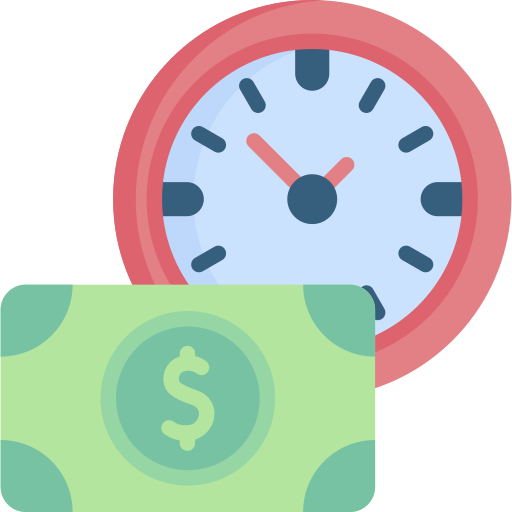
You now know the entry rules described previously when it comes to selling put options.
If you are just starting out in selling options, it is best if you follow these rules as they are meant to protect you.
You must never fall into the trap of chasing option premiums.
Now, let's go through the process of strike price and expiry date selection.
Strike Price Selection
The basis of selection of strike price was mentioned previously.
We want to select a strike price that is at or below our entry price.
If you are not sure how to calculate an entry price of a stock, do check out our valuation article on the Thermostat Method.
So here's an example.
Example 1:
Gin found stock ABC that passes our 8-Point Checklist.
He then proceeds to do a valuation on the company and the entry price was $40.
However, the current share price is $43.
Gin is smart not to overpay for his stocks, so he decides to sell a put option instead - and he was choosing between the strike prices.
Which of the following should he choose?
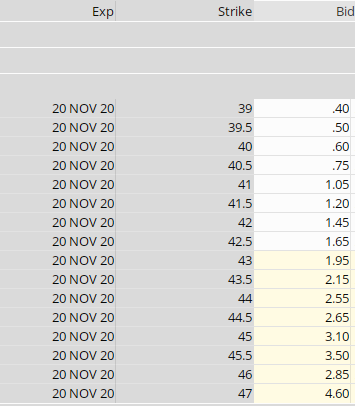
Actual option chain from ThinkorSwim
Ans: Gin can pick any strike price that is below his entry price of 40.
This means that he can pick either the strike price of 39, 39.5 or 40.
This is because, even if the put option gets exercised, he know that he will be buying the shares at his entry price anyways.
Now, you can see that any strike price that is below our entry price is sensible choice.
And in the above example, Gin could choose the strike prices of 39, 39.5 and 40.
So which one should he actually choose?
Well, to explain this, there are the implications when picking the strike price:
- The lower the strike price, the lesser the chance of the option getting exercised.
- The higher the strike price, the more option premium collected.
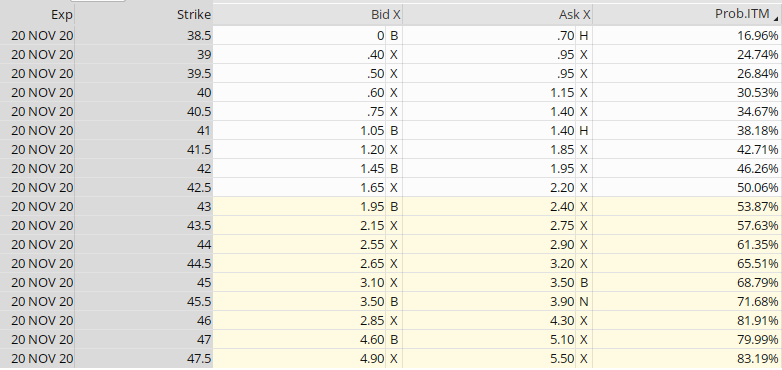
I want you to notice the last column which is Prob.ITM.
This stands for "Probability In the Money"
This percentage is calculated based on statistics and it can be interpreted as the probability the put options will get exercised at the end of expiry.
So you can see that at a strike price of 38.5, the chances of the put option getting exercised is only 16.96%.
Before we go on, here are some examples to recap what we have learned so far.
Example 2:
Using the above image as a reference, if Gin were to choose a strike price of 40, what is the option premium he would collect?
a. $60
b. $115
c. Somewhere in between
Ans: $0.60 is the bid price and $1.15 is the ask price.
When we sell options, we are looking at the bid column. So in this case, the answer would be $60.
(Remember that one option is 100 shares, so $0.60 X 100 = $60)
However, it should be noted that it is possible to "bargain" for the middle price which is $87.5 - because there may be option buyers who are willing to buy the put option from you at that price.
Example 3:
Using the above image as a reference, if Gin were to choose a strike price of 40, what is the chances that his put option will get exercised at expiry?
a. 30.53%
b. 69.47%
c. 50%
Ans: As indicated in the last column, the chances of exercise will be 30.53%.
Great job in going through those examples.
Now, let's get back to the concept of Prob. ITM.
Beginner investors tend to get afraid of their put options getting exercised - and therefore, will prefer to have a lower Prob. ITM.
This is so that it is likely that their put options won't be exercised and they don't have to buy the shares.
However, remember that that the whole point of investing is to collect the shares of quality business.
This means that we should not mind being exercised as this allows us to collect 100 shares at our entry prices.
Therefore as a guideline, I would usually sell put options at the entry price itself. This is so that I can collect more option premium, and at the same time, increases my chance of the option being exercised.
However, if you are not used to selling put options yet, then you can always sell the options at a strike price that is lower than your entry price.
Example 4:
Which of the following is true when choosing a lower strike price for selling put options?
a. You get the stock cheaper when the option gets exercised.
b. The chances of you getting exercised decreases.
c. The amount of premium you collect is much more.
Ans: The statements 'a' and 'b' are correct.
Since you are promising to buy at a lower strike price, this also means that if the options get exercised, you are buying the stock cheaper.
However, "b" is also accurate. The chances of you being exercised is also lesser since the Prob. ITM is lesser.
Statement "c" is wrong since you actually collect lesser option premium.
Great job for making it this far.
Now, we want to return the concept of R.O.P - Return on Option Premium.

As mentioned previously, we want to aim for a R.O.P of at least 2%.
However, that is for options with a monthly expiry (i.e. 30 days).
So let's say we are looking at an option with an expiry of only 15 days left.
How much R.O.P should we aim for?
Well, the answer would be 1%.
Example 5:
The option has the following data:
- 10 days of expiry.
- Strike Price of 60
- Option Premium of $0.50
Does this option pass our R.O.P rule?
Ans: Remember that for a 30 days option, we are aiming for a 2% R.O.P. This means that for a 10 days option, it will be 0.67% R.O.P.
The R.O.P for the above option is $0.50 / $60 = 0.83% - which is more than 0.67%. Therefore, this option passes our R.O.P rule.
Example 6:
Gin has calculated the entry price of stock DEF to be $50. The current share price is $70.
None of the options available provided a 2% R.O.P. What should Gin do?
a. Break the rules and sell put option at $65 instead.
b. Wait for the share price to fall
c. Buy the stock instead
Ans: The answer would be 'b'. The reason why there is no R.O.P that gives the required 2% is because the share price is too far away.
The statements 'a' and 'c' would be wrong because we want to be discipline investors and to follow our rules.
That sums up the rules for selecting strike prices.
Essentially, you only want to select strike prices that are:
- At or below your calculated entry price
- Gives a R.O.P of at least 2%
Now, let's go through the basis of selecting expiry dates for our sell put options.
Expiry Date Selection
Remember previously, for long call options - we want the longest expiry possible - in order to reduce the speed of time decay.
However, when we are option sellers, we want time decay to be as fast as possible.
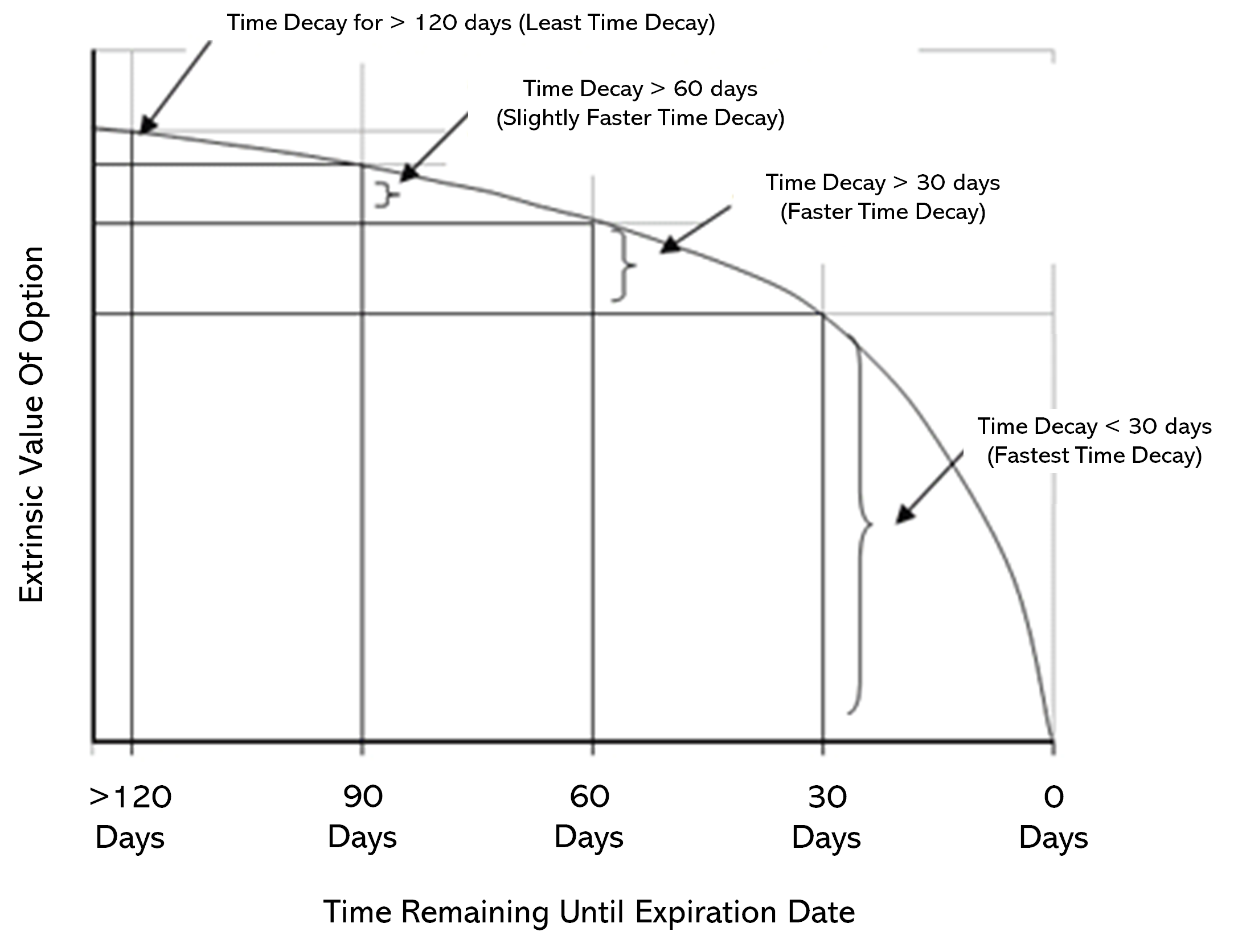
You can see from the graph above that time decay is almost at its fastest when it is less than 30 days.
This is why I usually sell put option that have expiry days of less than 30 days.
To understand time decay, remember that we are selling options.
This means that we want to sell high, and buy low.
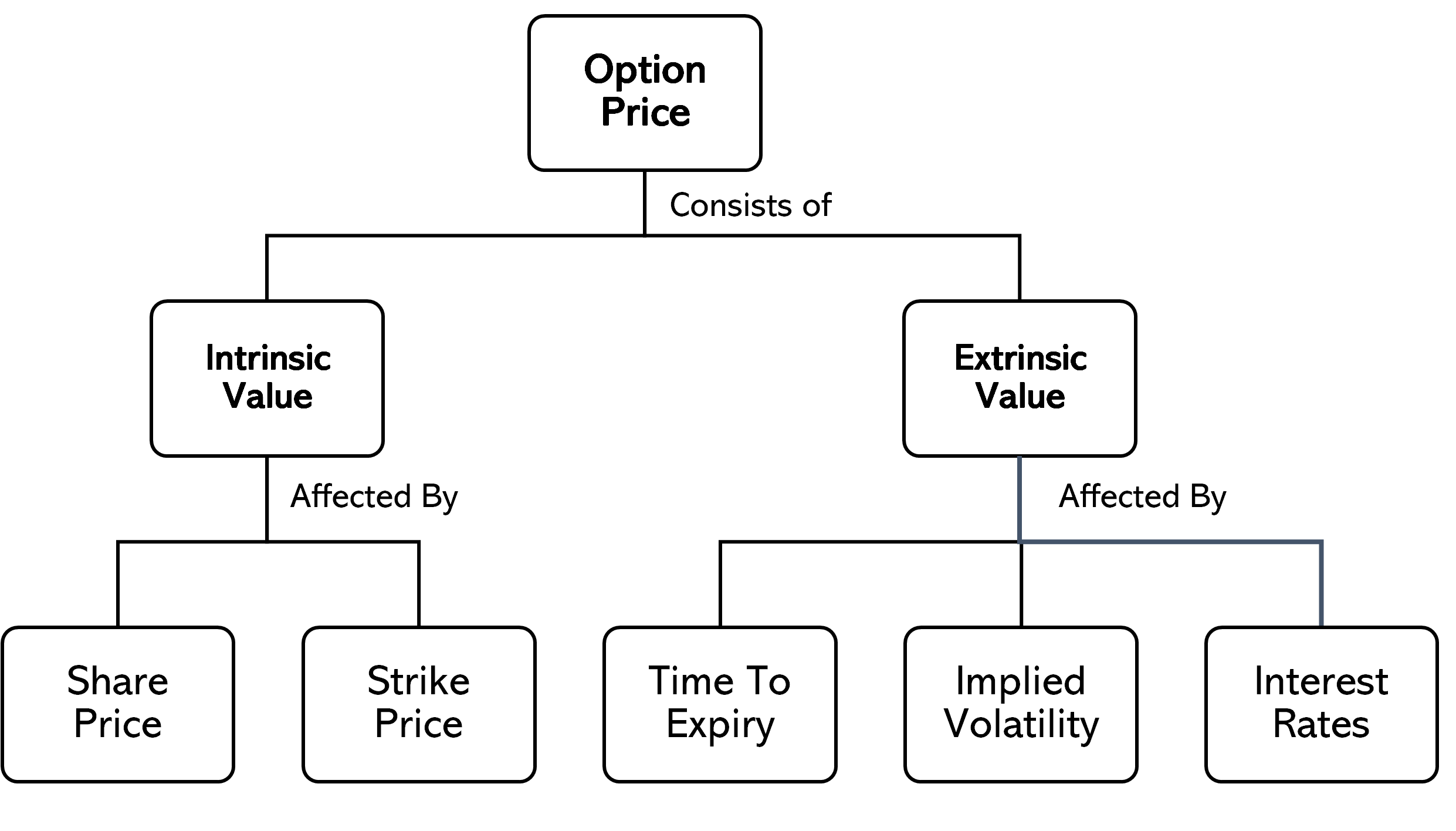
Remember that option price consists of intrinsic and extrinsic value.
Time decay is responsible for reducing the extrinsic value so that the option price decreases.
We want this option price to decrease as well as possible after selling a put option.
This is why we choose an option expiry date of typically less than 30 days.
Example 7:
Option pricing consists of intrinsic value and extrinsic value.
The extrinsic value of an option reduces to zero at the time of expiry. This is known as time decay.
For a shorter term option, time decay is faster - is this true of false?
a. True
b. False
Ans: The statement is true. Time decay is faster when the option is closer to its expiry date.
What's Next?
We have now went through the basis of strike price and expiration date selection.
Now, it is time to go through what I would do if my sell put option gets exercised.
You see, most beginner investors panic when their options gets exercised. When in truth is, if we followed the entry rules of the sell put option - there is little to worry about.
So let's explore what we can do when our put options are exercised.
Note: One of the biggest reasons why the options hub was built as there were too many people who get burnt because of the lack of knowledge of how options works and its risks involved. This resource hub aims to equip beginner investors with the knowledge of options and how they can manage their risks when investing with options.



